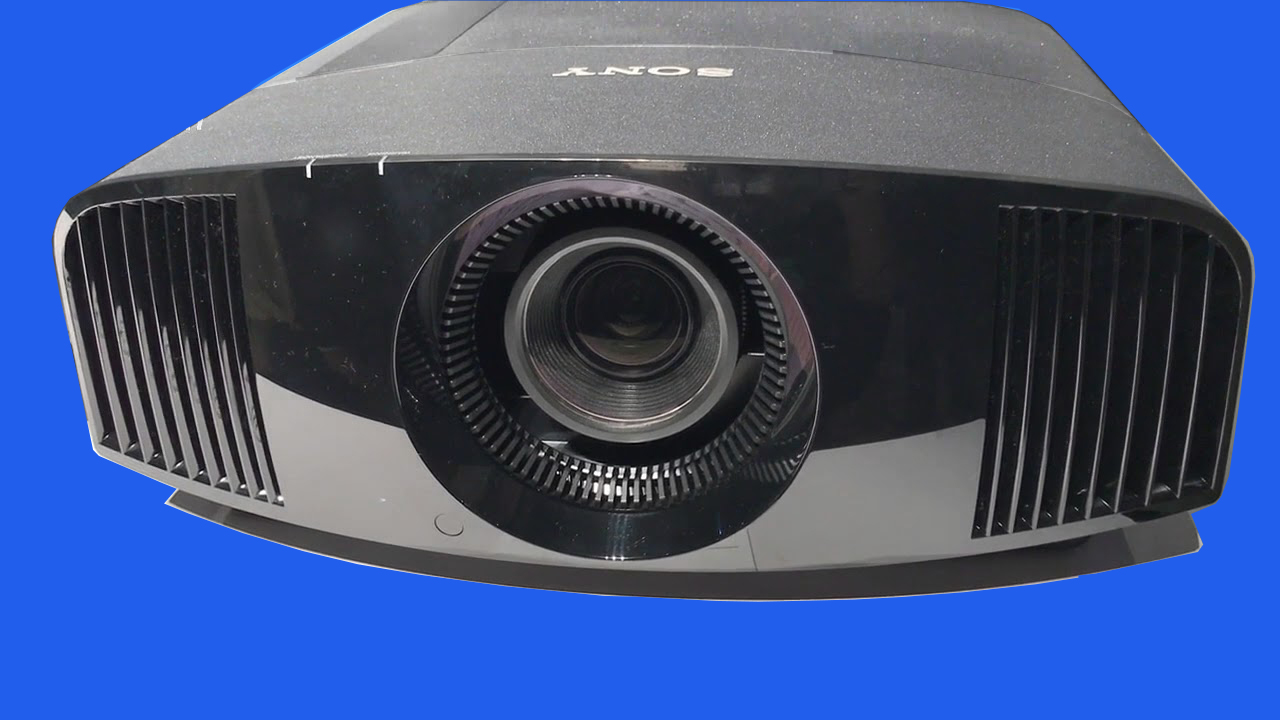Come see Real Theater Size 4K at Alterman Audio. Sony, the company that started 4K UHD for movie theaters now has a native 4K projector for $4999. The pictures are so sharp, so vivid, so high contrast, everyone who sees it loves it. The VPLVW295ES.
Way back in 1972, Sony developed the very first affordable projection TV for home use. Sony engineers took a Trinitron (one gun, one lens) picture tube, known for its brightness, and place a huge lens in front to create a projection TV. Sony went on to be a key developer of home use and professional projection TVs, including 3 tube models, LCDs, and then the SXRD... Silicon Crystal Reflective Display.
The SXRD. The Sony Qualia 004 was introduced in 2003. It was the first home use TV to offer Full HD. Each of the 3 chips had 1920 pixels on each horizontal row and 1080 rows for a total of 2,073,000 pixels x 3 for over 6 million pixels.
A key problem with conventional LCD chips was spacing between each pixel. When the image is projected, and magnified, that spacing between pixels can be visible. It is called the screen door effect. Sony’s micro manufacturing and in house IC chip manufacturing enabled Sony engineers to come up with a new chip with only 9 nanometers spacing. This is 1/10 the thickness of a human hair.
The First Native 4K TV... The SXRD. SXRD chips were developed professional movie theater projectors with 4K chips. There are over 18,000 movie theaters that use Sony 4K SXRD video projectors. Sony's propritary SXRD chips were used in the first Full HD 1080 sets for home use, the Sony SXRD Qualia Projector. Later home use rear projectors produced some of the best home TV sets ever made.
Speed. It has been said that LCD chips have a lag which sometimes attributed to picture blur. The SXRD chips are very conservatively rated to have a 2.5 millisecond rise time.
Brightness. A video projector, like a old slide projector or a film movie projector needs to be used in a relatively dark room. New screens have been developed, and some brands claim they can be watched in a well lit room, but after more than a 100 years, movie theater remain dark.
There is no standard for measuring a video projector’s brightness, but it can be assumed that the rating system would be the same within one brand, model to model.
High Contrast Ratio. To create a vivid picture, it is the contrast that really matters. Again, there are no standards. Read the magazine test reports and reviews, and compare other video projectors tested in the same magazines, and you’ll find this Sony has one of the best tested contrast ratios measured. One reason the SXRD has a better contrast ratio is that the light is reflected off the chip instead of passing through the chip.
This high contrast ratio create a true Cinema like quality in your home.
Motionflow. Years ago, ABC’s Wide World of Sports asked Sony Broadcast to create technology to clear up slow motion playback. Based on that technology, Sony developed Motionflow which adds, using computer technology additional frames to smooth fast motion. The result in a picture with outstanding clarity.
3D Ready. The professional movie theater SXRD sets brought fantastic 3D experience to millions of movie goers using polarized glasses. But, those projectors produce two simultaneous frames. For home use, the shutter glasses are used. Sony’s Motionflow, and Dark Frame Insertion and advanced settings for 3D not found on other projectors, allow adjustments to minimize crosstalk and create just about the best 3D picture you can get. Read the reviews.
Calibration. Based on the technology found on Sony professional SXRD projectors, this projector in the hands of a professional has manyadjustments, normally only found on those sets in real movie theaters.
Quiet. An advanced air discharge system insures the projector keeps cool, combined with a whisper quiet fan produces a fan level of 20 db.
Connections Galore. There are 2 HDMI inputs with PC timing support. RS-232C for advanced remote control system. D-sub-9 and IR inputs;
The Elevated Standard with 3 Year Warranty. ES stands for Elevated Standard, not just the quality of the product, service should you need it. There is a special high tech support hotline for ES customers.

